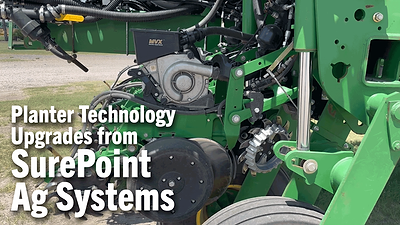I talked to many people in 2019. All of them had a similar story to tell about the year: it wasn’t terrific. It was either too wet or too dry; planting was hot and dry or cold and wet. There planting delays across the board with a record amount of prevent plant acres in typically unaffected areas. Record flooding of the Missouri River closed major highways for months and flooded farmland during planting season. It was dry and hot in the south during cotton planting and key growing times for the crop.
I also heard some metrological terms I hadn’t heard before, like bomb cyclone. This is a storm system that acts like a hurricane on land. Bomb cyclones are a once in a lifetime event, and it happened twice in 30 days in the High Plains. Here’s another one, polar Vortex. It just sounds scary. A polar vortex is an extreme dip south in the jet stream, allowing for extremely cold air from the poles to make its way south. Cattle and dairy producers felt the pinch from these storms and lost big chunks of their herds because of it.
Harvest wasn’t insulated from the mayhem, either. Early frost events, blizzards and heavy snowfall plagued the corn belt. As I am writing this, there is still corn in the field waiting for spring. In 2019, I experienced four blizzards — two in the spring and two in the fall. I bought a snowblower, hoping I would jinx the snowfall in the opposite direction; instead, I managed to bring more snow than anyone has seen for some time.
All-in-all, 2019 was a bad year, and it seemed to linger on and on with no real end in sight. But it wasn’t all bad. In June and July of 2019, producers had a chance at crop prices that showed profitability, short-lived but nonetheless profitable. There was a lot of December corn sold well above the board, and basis pressure has subsided for the time being. All of this has opened buying at year-end more so than in previous years. I have seen more interest in late and low model used equipment. Demand for these machines, I would say, is at a high with the number of producers trading 5-7 year old equipment with some hours on them.
Combines were soft throughout 2019, with accelerating downside from late summer to the end of the year. The 2012-14 model year machines are the guilty parties. These model years have started to wreak havoc with 2015-16 model years, but the 2017-19 model years seem to be holding their own. The combine market appears to be on one side of the spectrum or the other, and 2019 was not different from any other year.
Row-crop tractors were good sellers in 2019. The majority of the activity I saw was from updating older row-crop fleets with new machines that have newer technology. Yes, the machines had hours on them, and they were come upon or had already passed some key reconditioning points. Still, in my opinion, technology was the driving factor in updating equipment. Late and low hour tractors with the right options sold fast in 2019, and I think they will continue to do the same in 2020.
In 2019, the sale of 4WD tractors had proven to be a spec driven market. The need for bigger hydraulic capacity and the size of implements has made the selling of 4WDs based on its specs. It seems to be harder to sell a 4WD that doesn’t have a big hydraulic pump and a PTO. These two options are starting to become “standard features” and lower hour machines that don’t have these options are being passed over. In 2020, the demand for these specs will continue to grow.
Planters showed no signs of letting up with used demand. The agronomics of the high-speed planter is starting to show. Planting fast used to be the leading selling point, but now, it might be the third or fourth reason on the list. Used planters have been in short supply for the past 4 or 5 years and will continue to be for the next 2-3 years. The new production will have to start coming up, and this began to happen in 2019. More new planters were built in 2019, and this will begin feeding the used market in 2020 and 2021. Look for the next planter bubble forming around planters that don’t have high-speed technology. Retro kits will be a big seller in 2020 and 2021.
No matter what negative press is reported, 2020 will be a year ag turns the corner. USMCA and Phase 1 China trade deals will be signed in January of 2020, giving the markets the stability they have been looking for to start the slow but sure upward trend of commodity prices. I am very positive about what 2020 will look like and be! Things are starting to line up, and I am excited to see where it goes.






